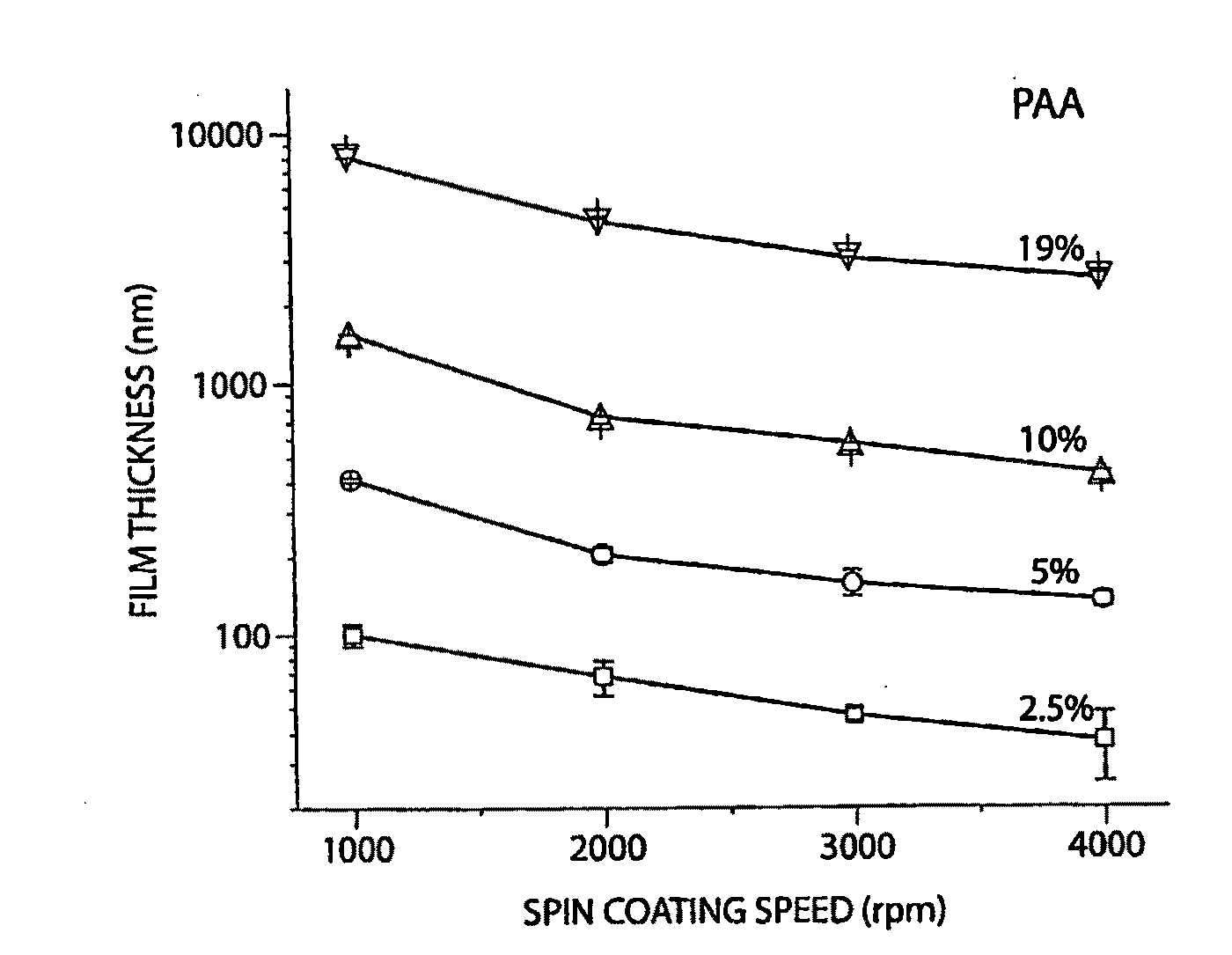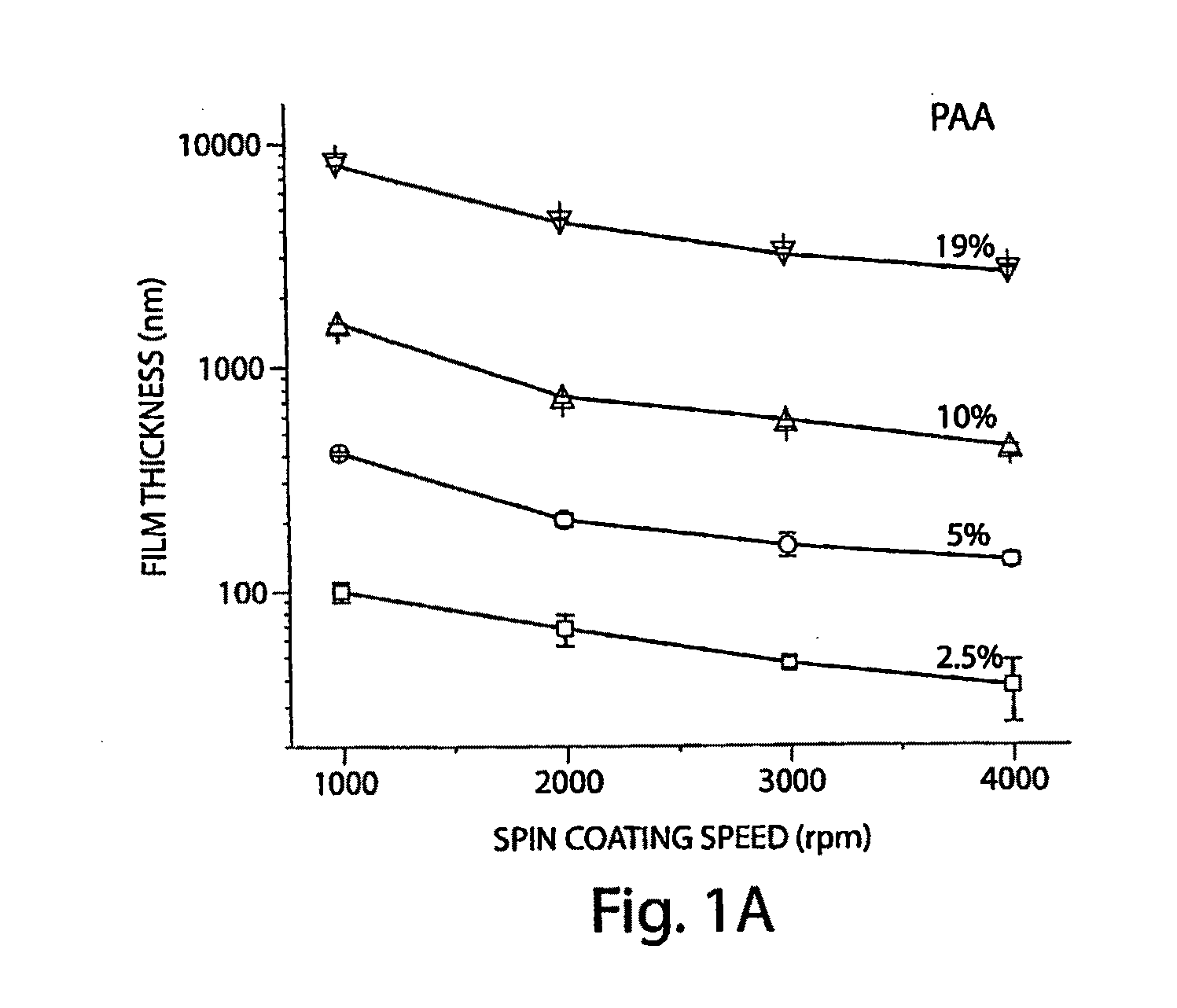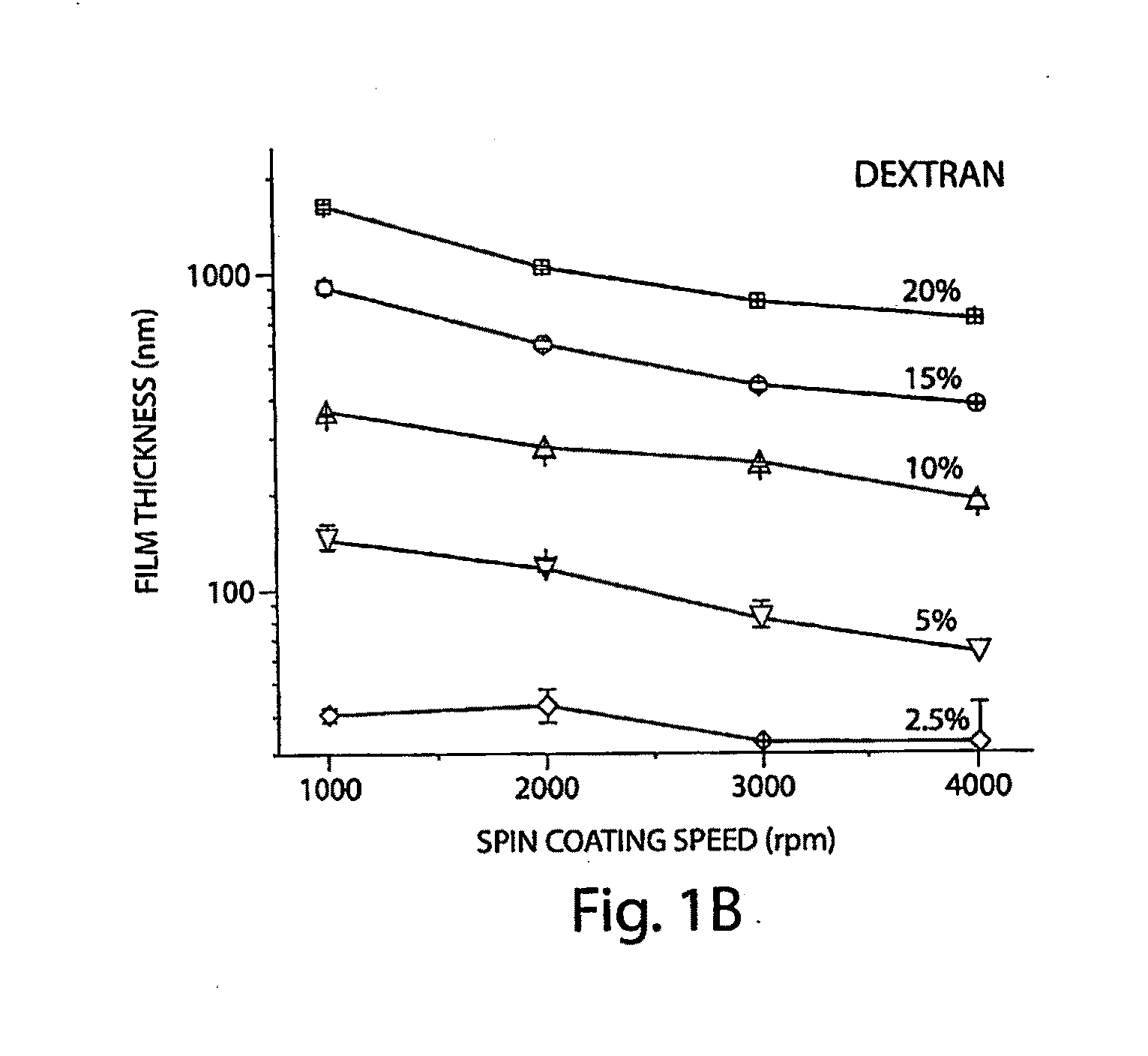Adjustable solubility in sacrificial layers for microfabrication
a microfabrication and solubility technology, applied in photomechanical devices, instruments, nanoinformatics, etc., can solve the problems of difficult disposal requirements, inconvenient and/or hazardous for inexperienced users, and poor selectivity of this etch beyond oxides, etc., to achieve the effect of rapid and simple preparation of these sacrificial layers and easy oxidization
- Summary
- Abstract
- Description
- Claims
- Application Information
AI Technical Summary
Benefits of technology
Problems solved by technology
Method used
Image
Examples
Embodiment Construction
[0022]In accordance with the invention, there is employed a water-soluble polymer as a sacrificial layer in a micromachining or other microfabrication process. The term “sacrificial” is herein meant to refer to a material layer that is employed as a mechanical place holder in a sequence of fabrication steps in which multiple materials are processed for producing a mechanical structure; once the relevant structural features are formed, the sacrificial layer is removed while the other materials are maintained in place, thereby to produce the desired mechanical structure. Sacrificial layers are important fabrication tools for producing, e.g., structures suspended over a substrate, as well as mechanical structures that include, e.g., cavities, moveable elements, and other three-dimensional features to be released in a final geometry at the end of a fabrication sequence.
[0023]The invention provides materials suitable for use as sacrificial material in a microfabrication or other fabricat...
PUM
| Property | Measurement | Unit |
|---|---|---|
| thick | aaaaa | aaaaa |
| RMS roughness | aaaaa | aaaaa |
| thickness | aaaaa | aaaaa |
Abstract
Description
Claims
Application Information
 Login to View More
Login to View More - R&D
- Intellectual Property
- Life Sciences
- Materials
- Tech Scout
- Unparalleled Data Quality
- Higher Quality Content
- 60% Fewer Hallucinations
Browse by: Latest US Patents, China's latest patents, Technical Efficacy Thesaurus, Application Domain, Technology Topic, Popular Technical Reports.
© 2025 PatSnap. All rights reserved.Legal|Privacy policy|Modern Slavery Act Transparency Statement|Sitemap|About US| Contact US: help@patsnap.com



